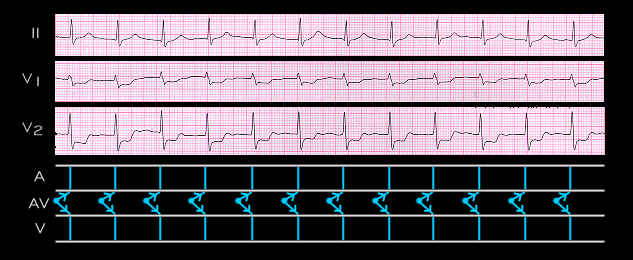
The three simultaneously recorded ECG leads shown here illustrate an accelerated AV junctional rhythm having a rate of 83 /min. Here, there are no obvious P waves. This suggests that the atria may be depolarizing in a retrograde direction by the AV junctional impulse at about the same that the ventricles are being depolarized and that the retrograde P wave is lost within the QRS complex. This is illustrated in the ladder diagram below the tracing.
The patient from whom this tracing was recorded presented to the emergency department with chest pain that occurred at rest. He was found to have a totally occluded circumflex coronary artery. The ST depression in leads V1 and V2, coupled with the wide R waves in these leads is indicative of an acute posterior wall myocardial infarction.
